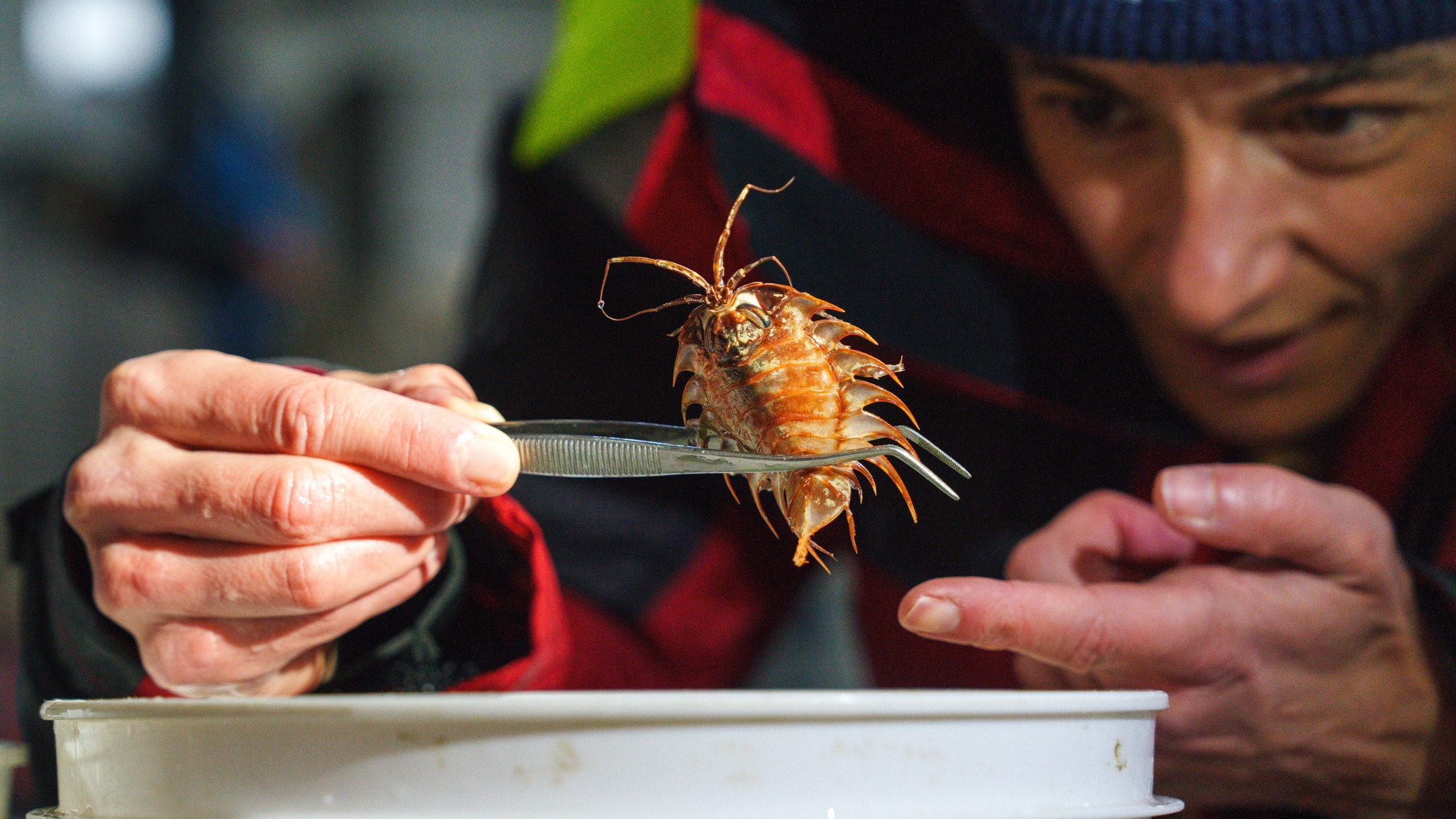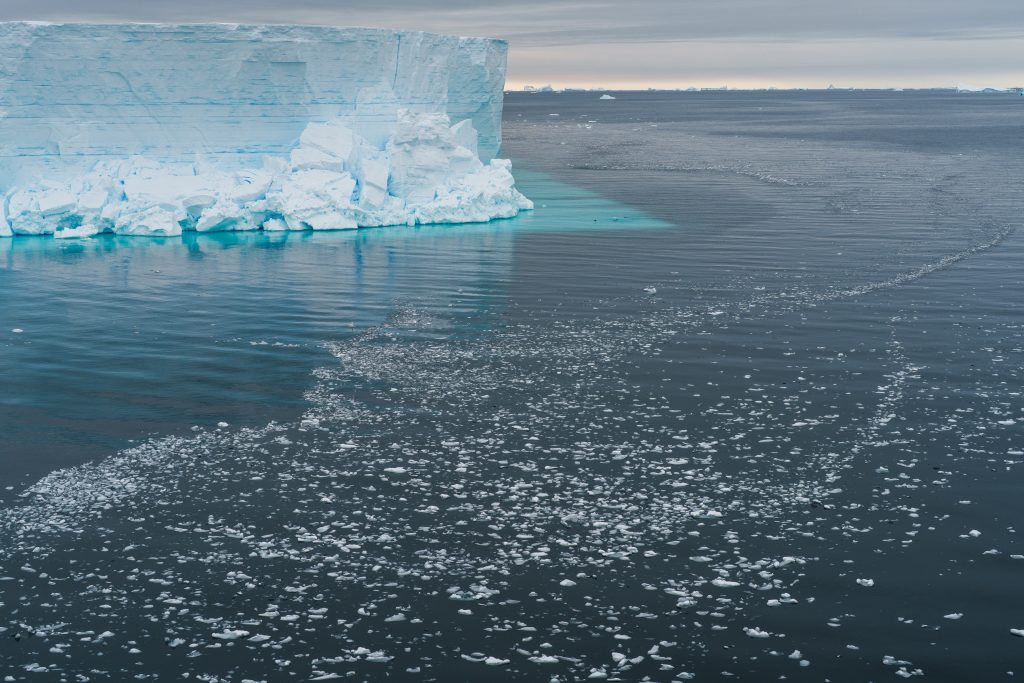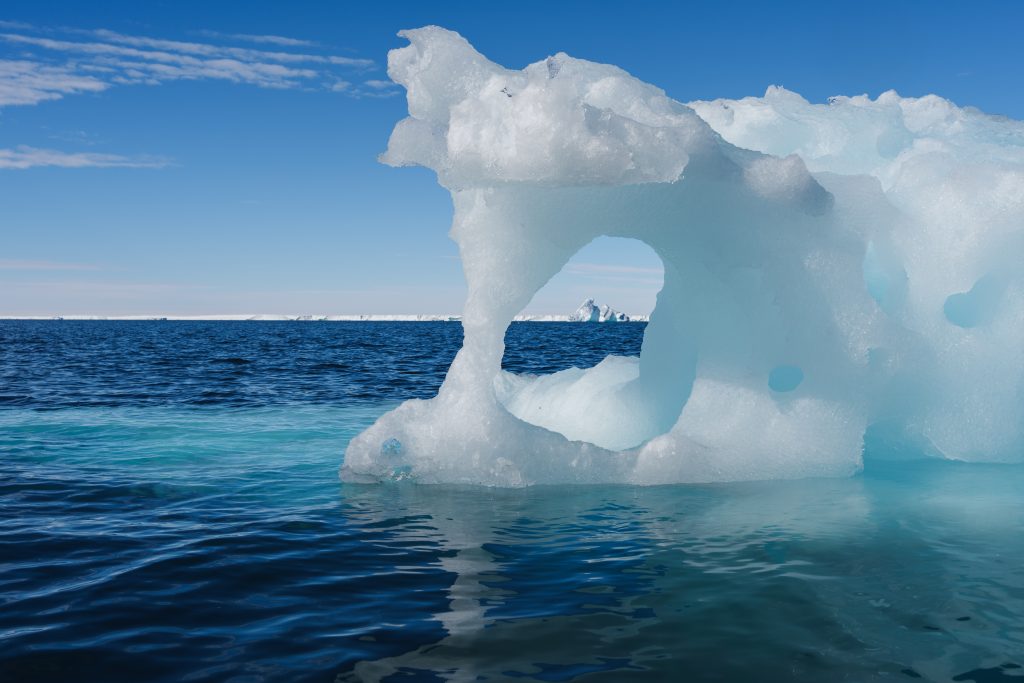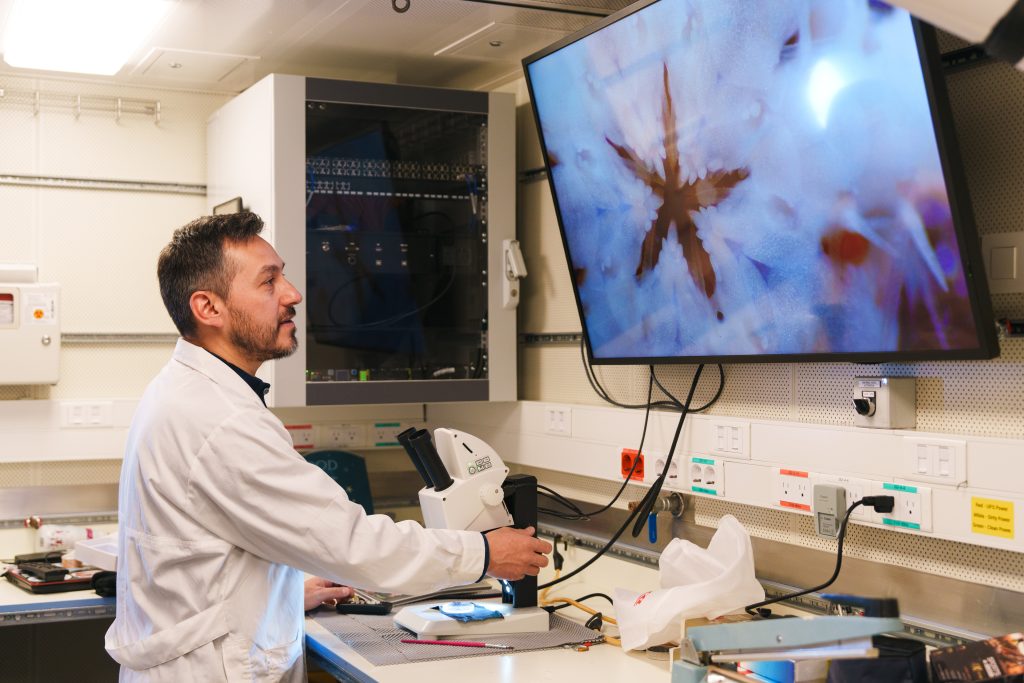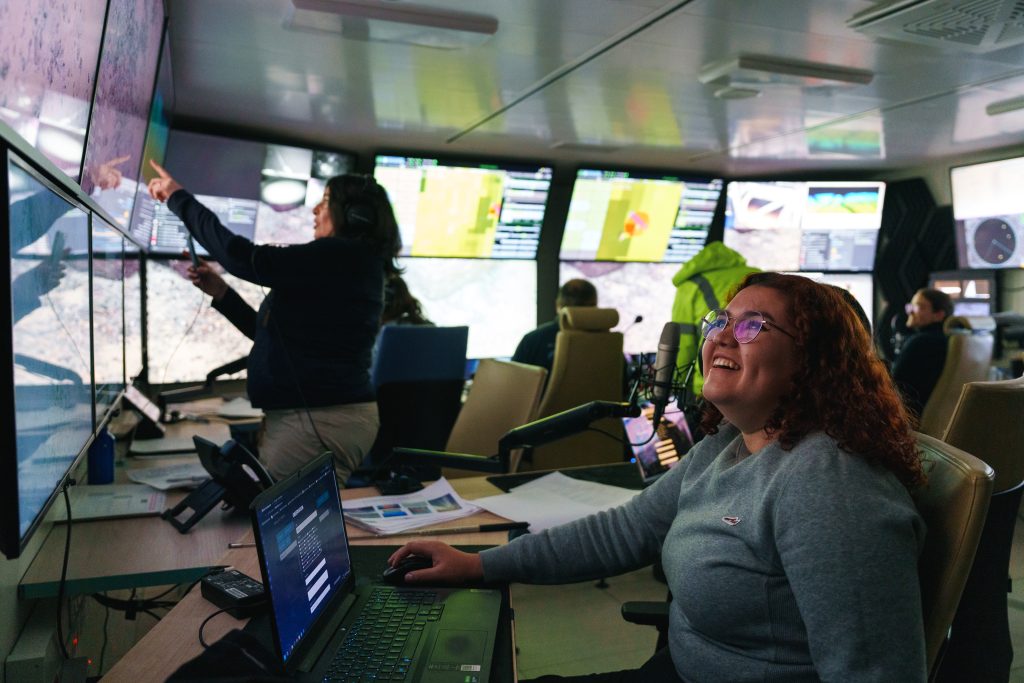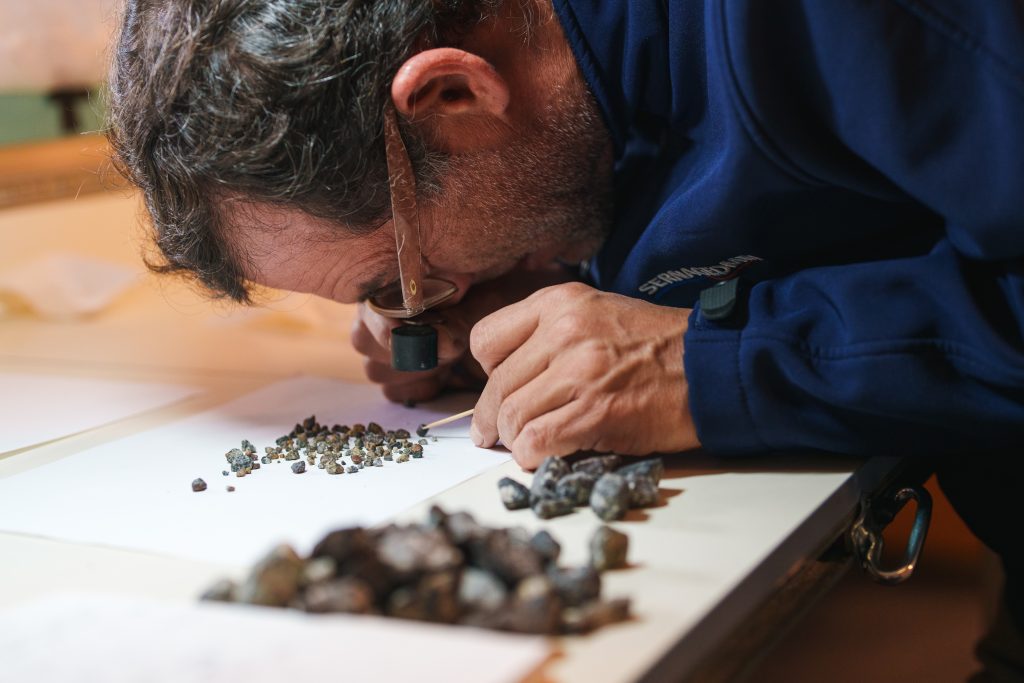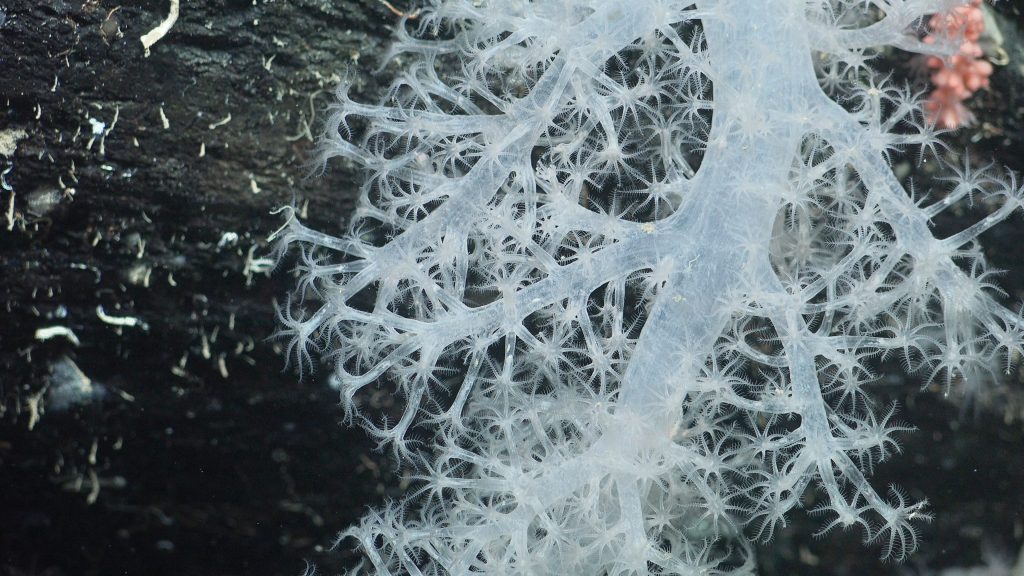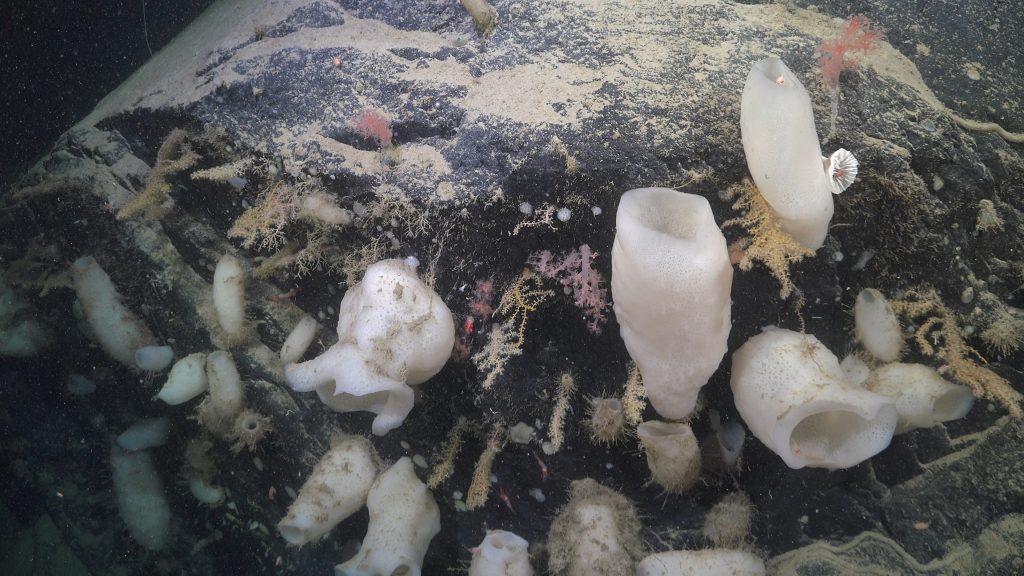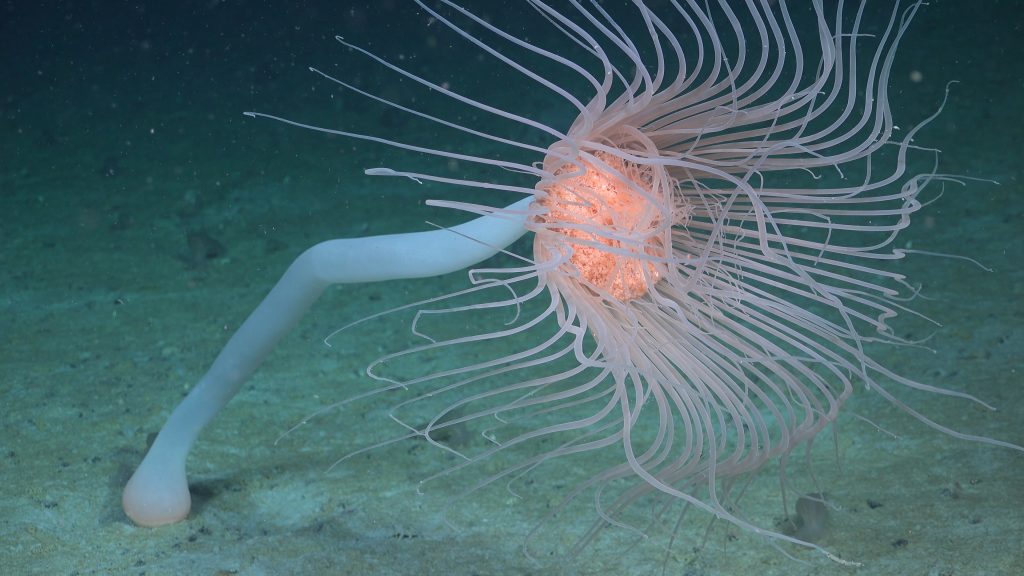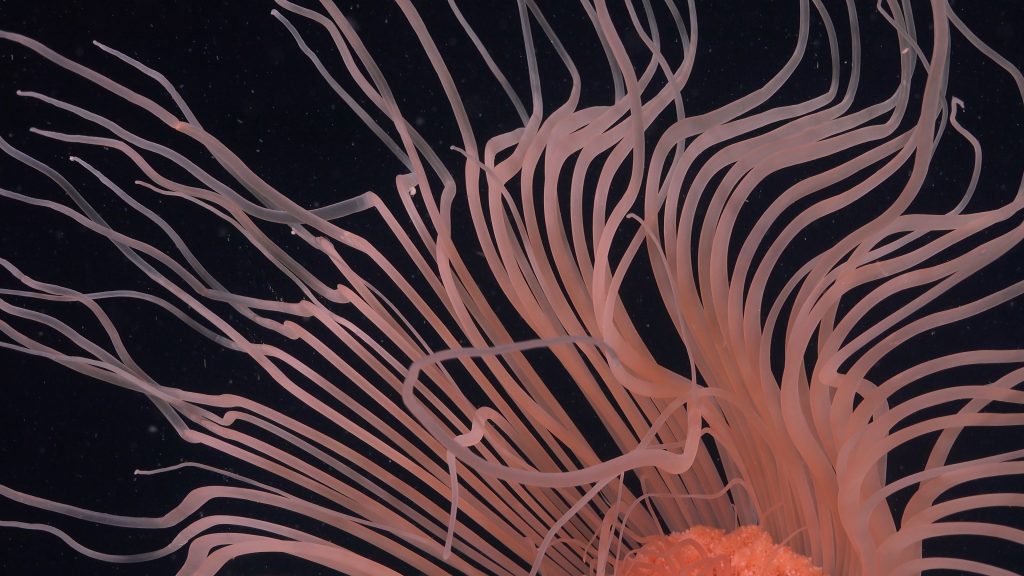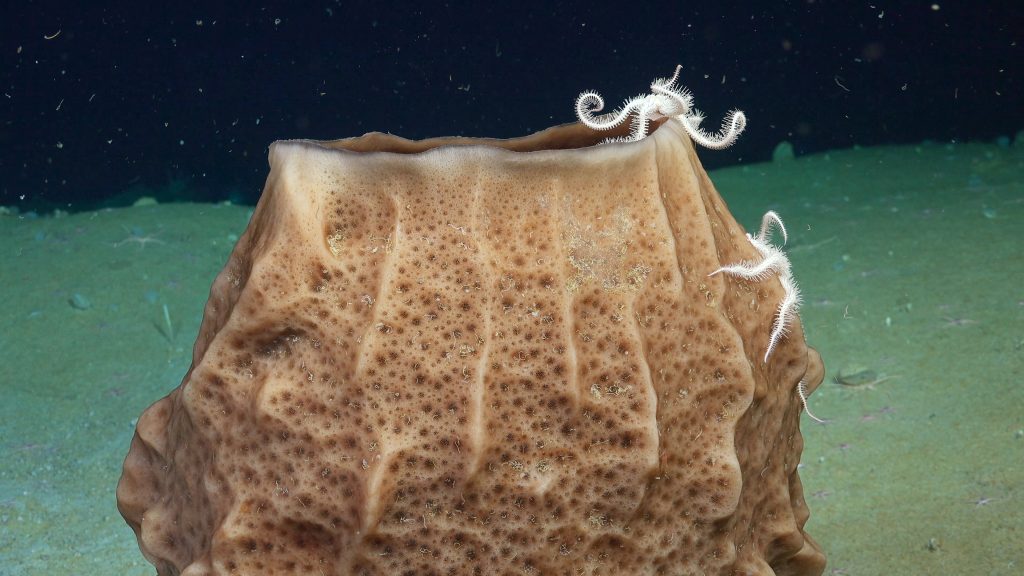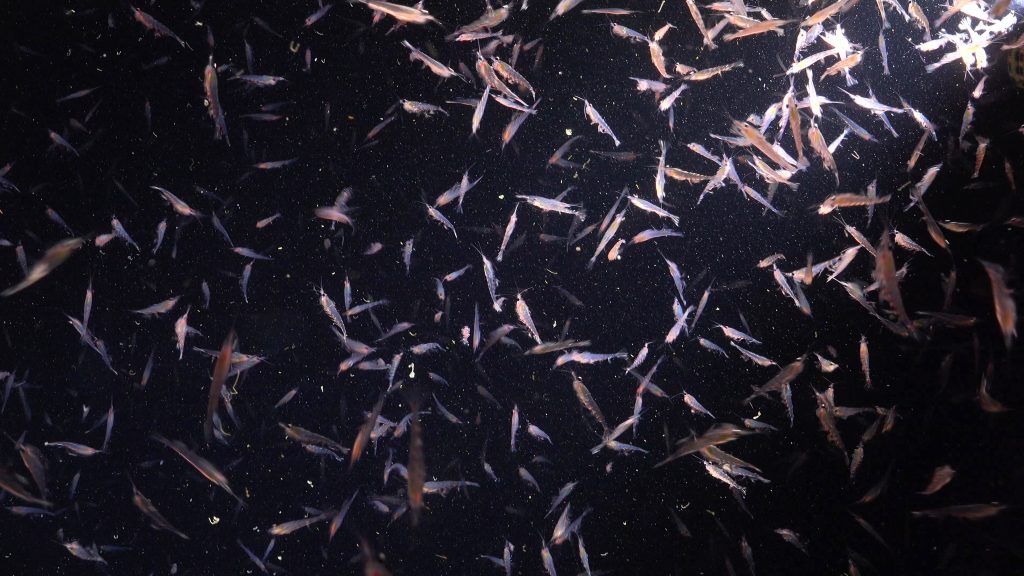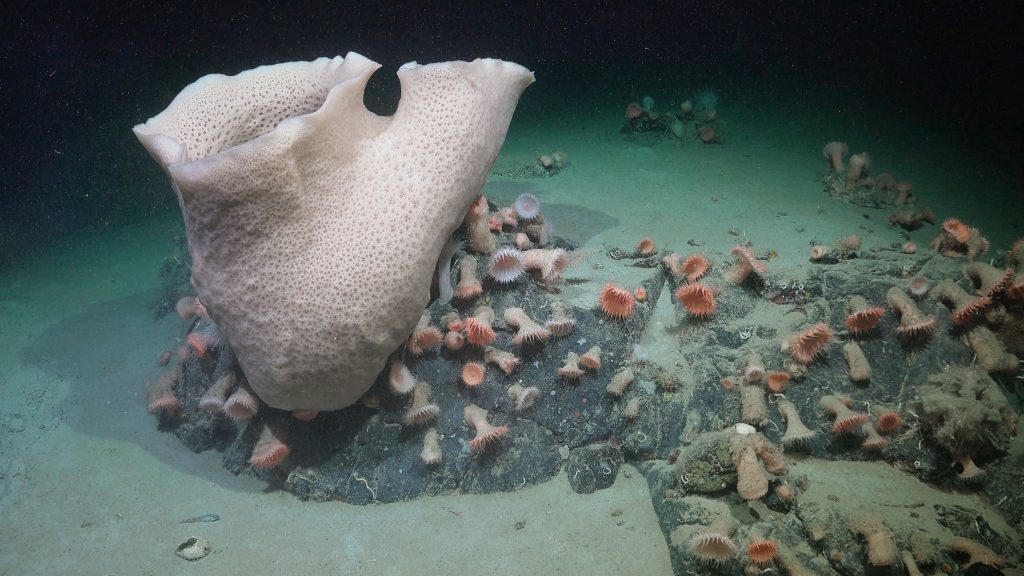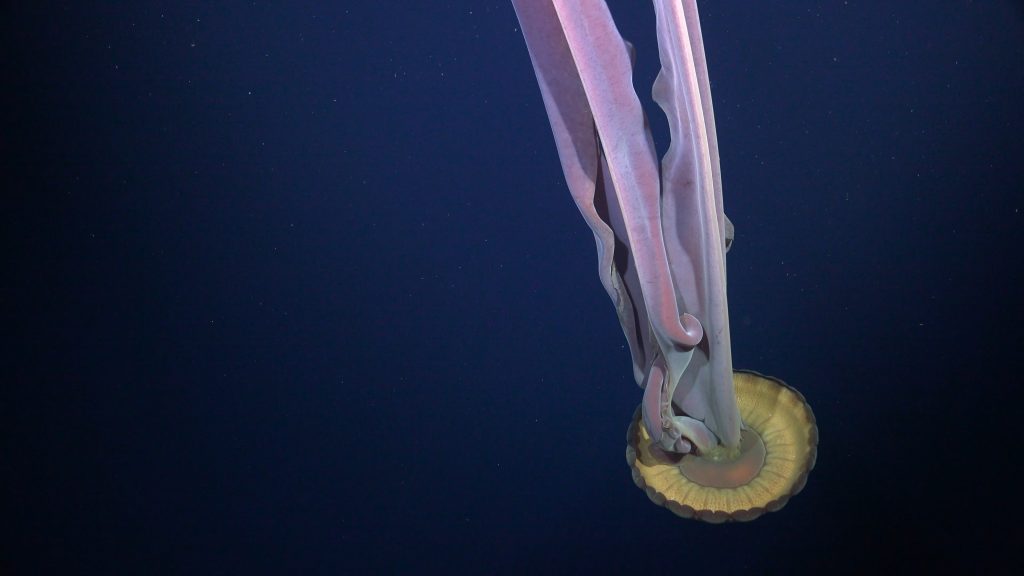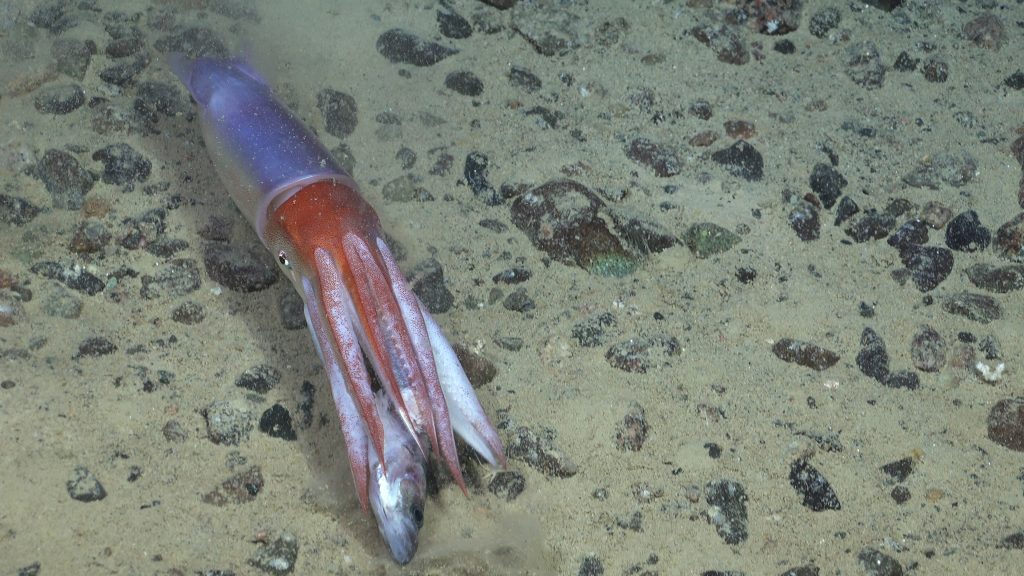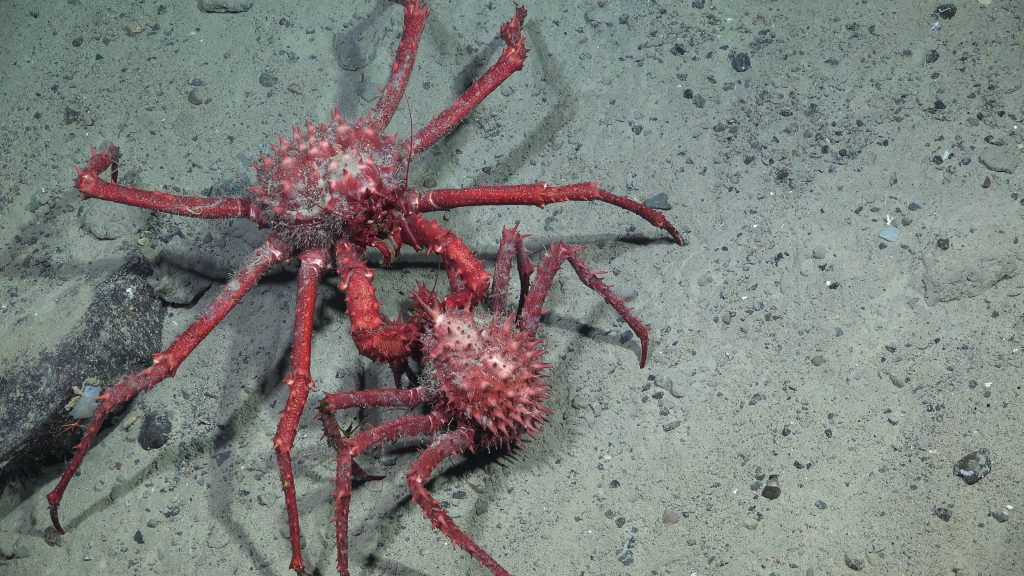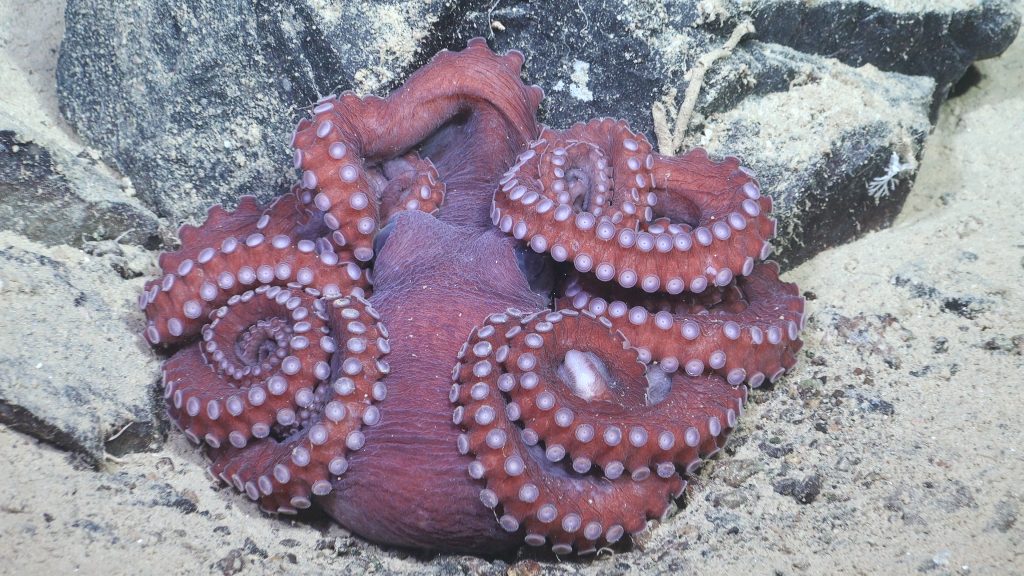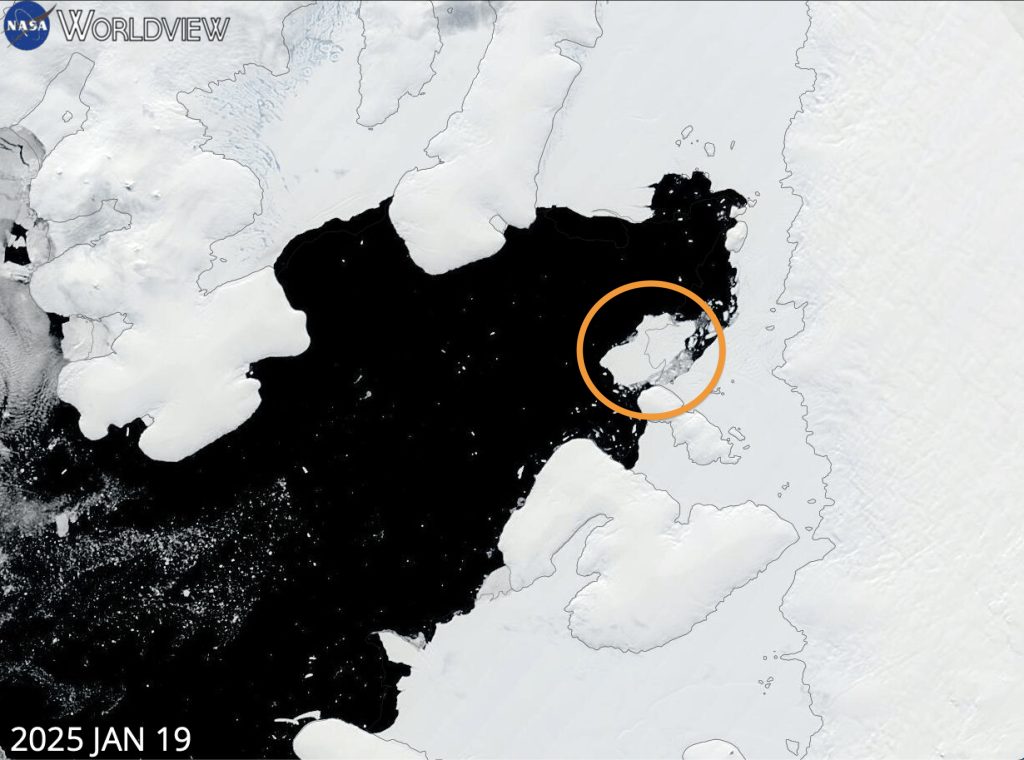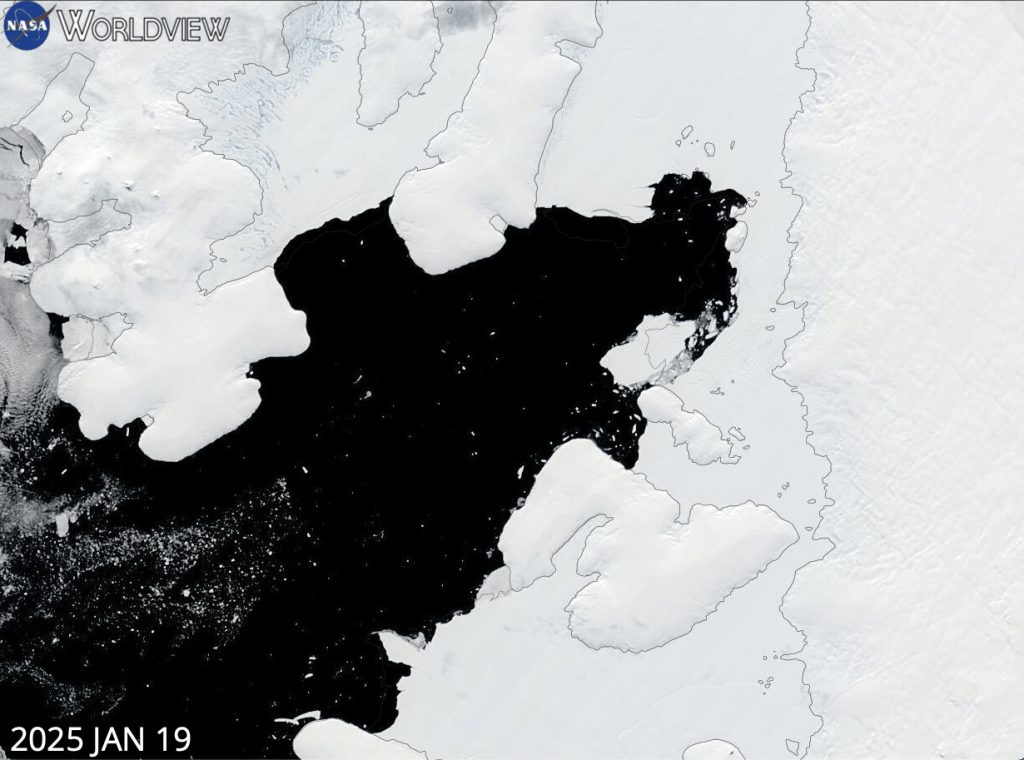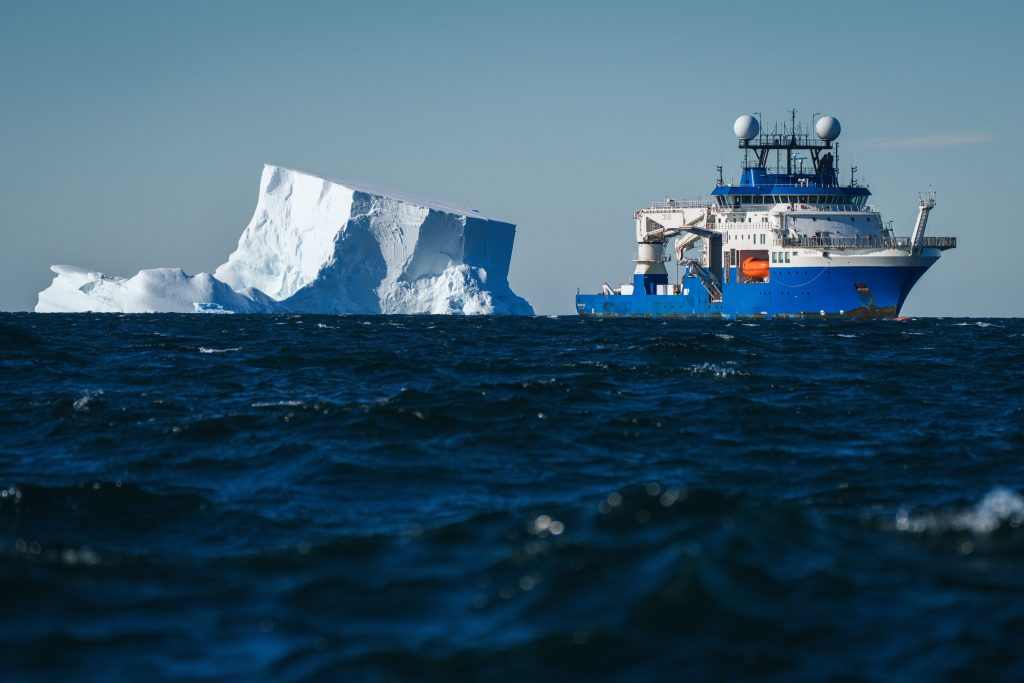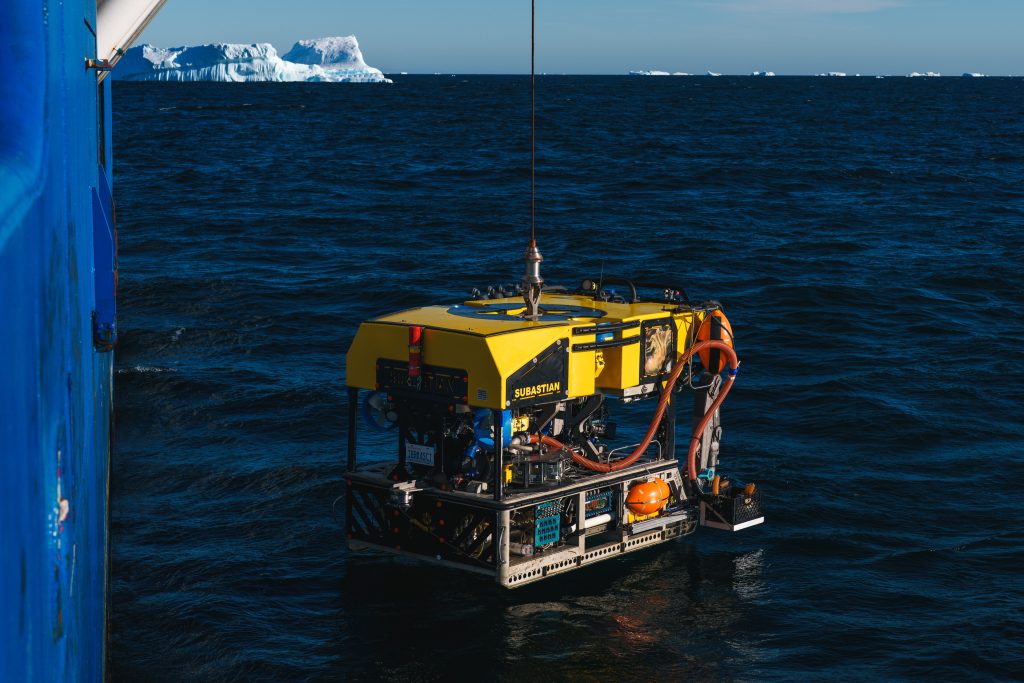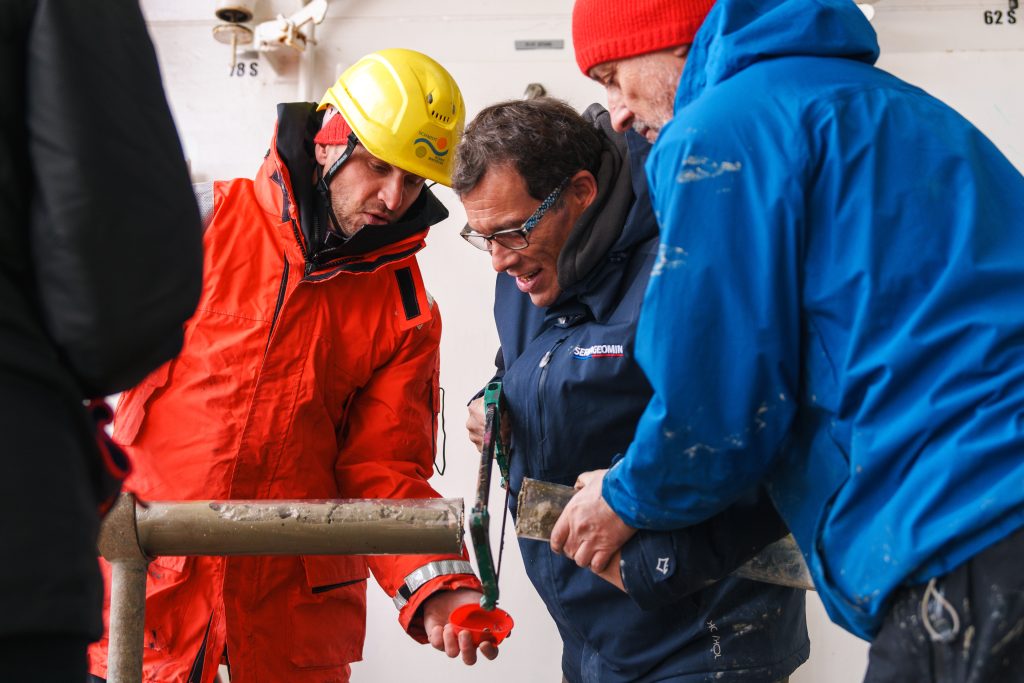Patrícia Esquete, researcher at CESAM/DBIO of the University of Aveiro, co-led the expedition in PUNTA ARENAS, Chile – An international team aboard the R/V Falkor (too), operated by the Schmidt Ocean Institute, has made a groundbreaking discovery in the Bellingshausen Sea. Following the unexpected calving of iceberg A-84 from the George VI Ice Shelf on 13 January 2025, researchers quickly adapted their expedition plans to study the newly exposed seafloor—an area previously inaccessible to humankind.
On 25 January, the team reached the unexplored depths and conducted the first comprehensive interdisciplinary study of the region’s geology, physical oceanography, and biology. The iceberg, measuring approximately 510 square kilometres—the size of the city of Chicago—revealed an equally vast area of seafloor for scientific exploration.
Patrícia Esquete, co-chief of the expedition and researcher at the CESAM/DBIO of University of Aveiro, highlighted the significance of the discovery: “We seized the moment, changed the expedition plan, and moved forward to observe what was happening in the depths. We did not expect to find such a beautiful and thriving ecosystem. Based on the size of the animals, the communities we observed have likely been there for decades, perhaps even hundreds of years.”
The participation of researcher Patrícia Esquete in the expedition to the Bellingshausen Sea reflects CESAM’s commitment, within the activities of the Deep Sea, Ocean, and Transitional Ecosystems Research Cluster, to expanding knowledge about ecosystems beneath ice shelves and the impacts of climate change in polar regions.
Over eight days, researchers used the remotely operated vehicle (ROV) SuBastian to explore depths of up to 1,300 metres. Their observations revealed a flourishing ecosystem with large corals and sponges supporting a diverse array of marine life, including icefish, giant sea spiders, and octopuses. This discovery provides an unprecedented insight into the functioning of ecosystems beneath Antarctica’s floating ice shelves.
In addition to collecting biological and geological samples, the team deployed autonomous underwater gliders to analyse the effects of glacial meltwater on the region’s physical and chemical properties. Preliminary data indicate high biological productivity and a significant flow of meltwater from the George VI Ice Shelf.
This expedition, also reported in several international media (see, for example, The Washington Post) was part of Challenger 150, a global deep-sea biological research initiative endorsed by UNESCO’s Intergovernmental Oceanographic Commission (IOC/UNESCO) as an official action of the UN Decade of Ocean Science for Sustainable Development.
